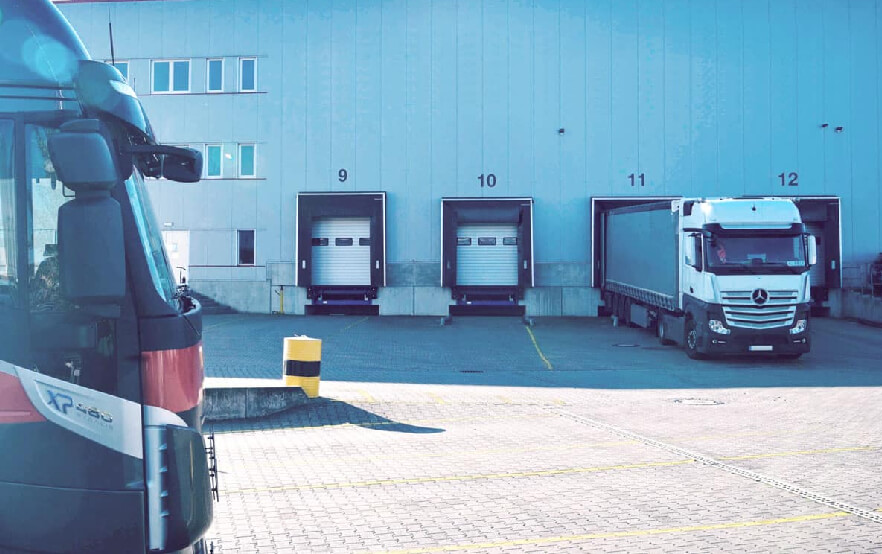
Streamlining Warehouse Operations with RFID Integration in SAP EWM
Introduction:
Being at the helm of warehouse management or a supply chain expert, you are well-acquainted with the intricate complexities and hurdles inherent inefficient warehouse operations. The spectrum of responsibilities spans from meticulous inventory tracking to optimizing storage and picking procedures, requiring your unwavering focus. Fortunately, in the midst of these challenges, a beacon of hope emerges in the form of Radio-Frequency Identification (RFID) technology, presenting a transformative solution to streamline and elevate warehouse operations to new heights. Unlocking its full potential, when seamlessly integrated with SAP Extended Warehouse Management (EWM), RFID becomes a catalyst that revolutionizes your warehouse management approach, setting the stage for an era of unparalleled efficiency and productivity.
What is RFID?
At the forefront of modern innovation stands RFID, an abbreviation that heralds the power of Radio-Frequency Identification. Seamlessly weaving the prowess of radio waves, this transformative technology sparks an intricate dance of communication between a small yet mighty tag and a reader. Encapsulated within the tag lies a treasure trove of information, divulging its identity, location, and other vital data. With a handheld or fixed reader in hand, this communication unfolds, capturing the essence of the tag’s intelligence and seamlessly transmitting it to a centralized database or system.
Beyond its awe-inspiring mechanism, RFID finds itself as the shining star in an array of domains, where its applications radiate with brilliance. From granting access control to enabling seamless asset tracking and powering the marvel of contactless payment systems, RFID holds the key to unlocking an array of possibilities.
For warehouses, this technology serves as a beacon of transformation, ushering in a new era of cost reduction, heightened efficiency, and fortified security. With RFID as their guiding light, warehouses venture into a realm where innovation converges with practicality, paving the way for boundless growth and success.
Benefits of RFID in Warehouse Management:
Integrating RFID into your warehouse management system can yield several benefits:
Real-time Tracking and Data Collection:
RFID enables real-time monitoring of object movement and location within your warehouse. This capability is particularly valuable for tracking inventory, providing accurate and up-to-date information on stock quantities and locations.
Improved Accuracy and Speed:
With RFID, warehouse tasks such as receiving and picking can be performed more accurately and efficiently. By scanning items as they are received or picked, manual data entry errors are minimized, saving time and improving overall operational efficiency.
Enhanced Security and Compliance:
RFID can be utilized to track the movement of hazardous materials, ensuring proper storage and handling. It also aids in monitoring access to restricted areas, mitigating the risk of unauthorized access or theft.
RFID Integration with SAP EWM:
SAP Extended Warehouse Management (EWM) is a module within the SAP supply chain management system that offers advanced warehouse management capabilities. By integrating RFID with EWM, warehouses can leverage real-time tracking and data collection features to optimize their operations.
To integrate RFID with SAP EWM, you need to follow these steps:
Procure RFID Hardware:
Purchase RFID tags and readers that are compatible with your warehouse environment.
Configure RFID Hardware:
Set up and configure the RFID hardware to establish seamless communication with your EWM system.
Define RFID Tags and Readers in EWM:
Create configurations in the EWM system to recognize and interact with the RFID tags and readers.
Once the RFID hardware and software are set up, you can start utilizing RFID technology to track and manage various warehouse operations. For example, you can track the movement of inventory during receiving, storage, and picking processes. Additionally, RFID can be used to monitor the movement of employees, equipment, and other assets within the warehouse.
The seamless integration of RFID technology with SAP EWM forms an unparalleled alliance, setting the stage for a symphony of real-time communication and data exchange across every facet of your supply chain. Empowered by this transformative duo, your organization gains the invaluable ability to make data-driven decisions with a profound understanding of the dynamic landscape. Prompt responses to fluctuations in demand or supply become second nature, as the pulse of real-time information fuels agility and adaptability. Unlocking the true potential of your warehouse operations, this synergy paves the way for unrivaled efficiency, redefining the trajectory of success in the ever-evolving world of modern commerce. Step into this realm of innovation, where RFID and SAP EWM join forces to rewrite the narrative of supply chain excellence.
SAP EWM Consultancy:
If you’re interested in exploring the potential of SAP EWM and RFID integration further, our SAP EWM consulting team is here to assist you. They have extensive experience in implementing and optimizing warehouse management solutions using SAP EWM, including RFID integration. Reach out to our consultancy team to learn more about how RFID integration with SAP EWM can transform your warehouse operations.
Conclusion:
In conclusion, integrating RFID with SAP EWM offers warehouse managers and supply chain professionals an efficient solution to streamline operations, improve accuracy, enhance security, and optimize overall efficiency. By leveraging real-time tracking, data collection, and communication capabilities, warehouses can unlock the full potential of RFID technology and take their warehouse management to new heights.


